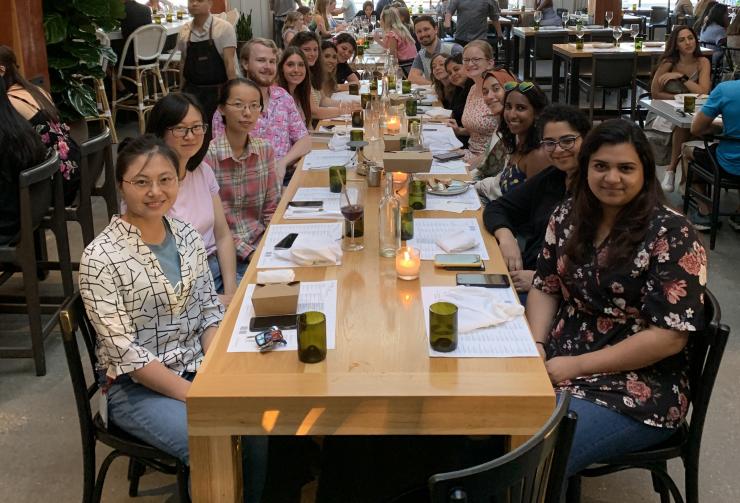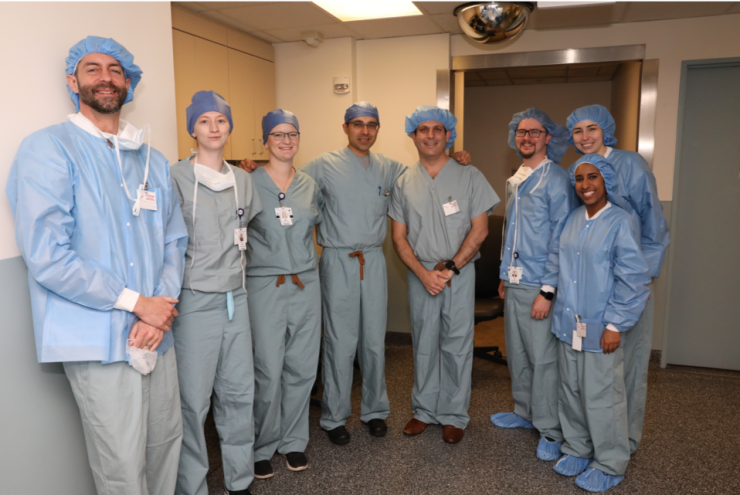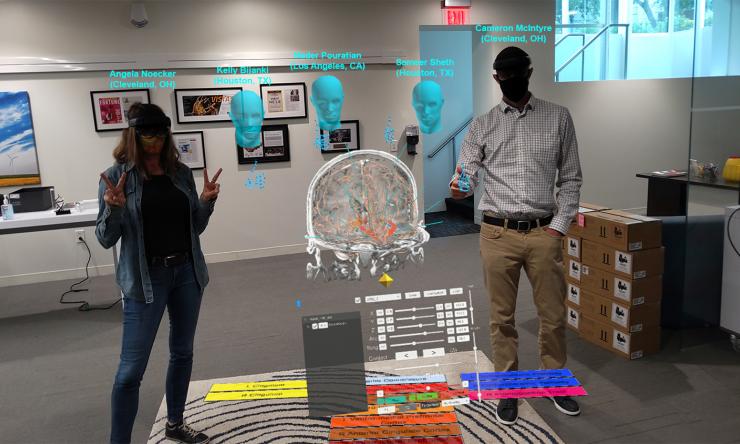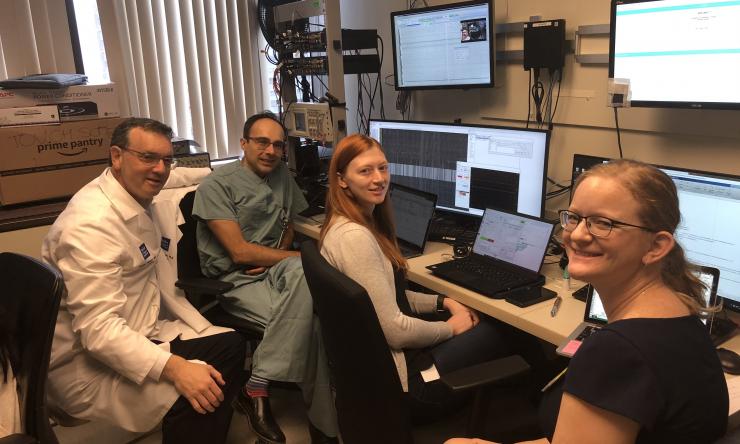About the Lab

The Translational Neuromodulation Lab explores the neurobiological, behavioral and electrophysiological correlates of human emotional behavior and psychopathology, particularly related to the effects of brain stimulation on affective neural circuit function. Our work primarily occurs on a unique research platform in the epilepsy surgery domain, embracing the recent advances in the field toward stereotactic electroencephalography (sEEG) with extensive coverage of deep structures and white matter fibers, as opposed to traditional approaches which focused more on the cortical surface.
Our Research

This setting facilitates in-vivo studies of the electrophysiological and neural correlates to affective function in awake and behaving human subjects in a manner not previously possible. This setting, when leveraged in tandem with our expertise in surgical neuroimaging techniques, allows both mechanistic and causal experiments to be implemented in human research participants. Our work in establishing this platform has recently been awarded a K01 Mentored Career-Development award from the National Institutes of Mental Health, as well as an R21 Exploratory and Developmental award from the National Institutes of Neurological Disease and Stroke.
In addition, our work was selected as the cover article for the March 2019 issue of the Journal of Clinical Investigation, where we demonstrated that stimulation to the cingulum bundle evokes changes in anxiolysis, mirth, and euphoria, as well as corresponding changes in affective bias, facial motor activity, and autonomic tone. Our work garnered national and international press coverage and was featured in the NIH Director’s Blog.
Stimulation Elicits Immediate Happy Response
This video demonstrates the behavioral results from stimulation to the anterior cingulum bundle in a patient with depth electrodes in the structure for clinical purposes in the treatment of epilepsy.
Key Collaborators
The Translational Neuromodulation Lab enjoys strong collaborations with thought leaders in the areas of biophysics, biomedical engineering, clinical neurophysiology, neuroscience, and psychiatric neuromodulation. At Baylor, we collaborate with Dr. Sarah Heilbronner, Dr. Eleonora Bartoli, Dr. Andrew Watrous, Dr. Jeff Yau, and Dr. Alicia Goldman, who is also a clinician in neurology. Additionally, key external collaborations with Dr. Nader Pouratian (UTSW), Dr. Nick Trapp (Iowa), Dr. Aaron Boes (Iowa), Dr. Cameron McIntyre (Duke), Dr. Nanthia Suthana (UCLA), Dr. David Borton (Brown), Dr. Jeffrey Cohn (Pitt), Dr. Helen Mayberg (Mt. Sinai), Dr. Michael Beauchamp (UPenn), Dr. Jon Willie (WashU), and many others are central to our efforts in an era of team science and multidisciplinary investigation.
Funding
The Translational Neuromodulation Lab is fortunate to receive current funding from the National Institutes of Health (NIH R01-MH127006 and NIH R01-MH130597), as well as previous funding from the National Institute of Mental Health (NIMH K01MH116364), the National Institute of Neurological Disorders and Stroke (NINDS R21NS104953 and NINDS UH3NS103549). Additional funding has been provided by the ARCO Foundation and the Caroline Wiess Law Fund. We are grateful to have received support from the American Foundation for Suicide Prevention (YIG001513), NIH/NCATS (KL2TR000455), and NARSAD.











